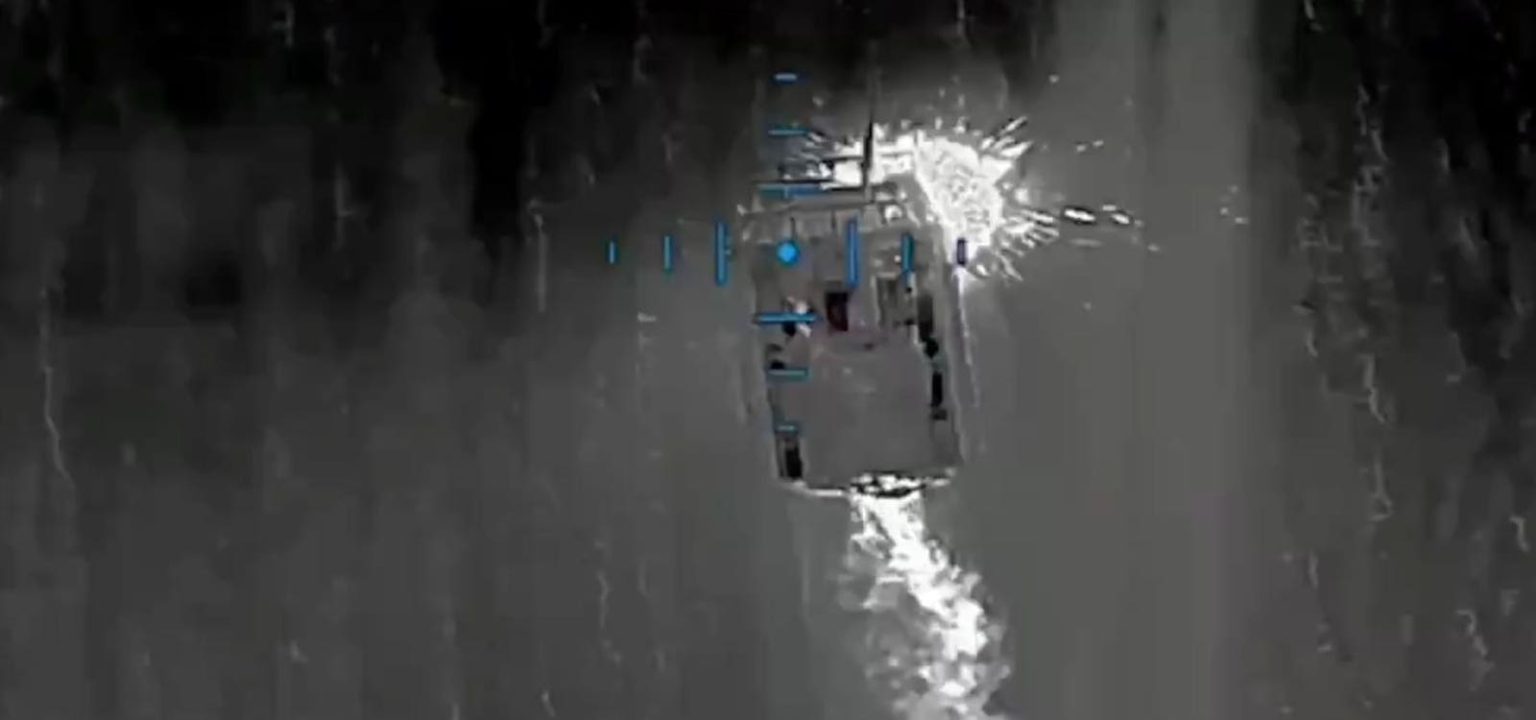A Ukrainian drone team from the Nemesis group scored one of the more impressive kills of Russia’s 31-month wider war on Ukraine last week when it spotted a fast-moving Russian turtle tank and, carefully leading the speeding vehicle, dropped one grenade to crack open the tank’s add-on armor—and then dropped a second grenade under the tank’s tracks. At night.
“Our pilots demonstrated the highest level of skill,” the Ukrainian military’s drone branch boasted. The drone’s third grenade missed, but it didn’t matter. The damaged tank veered off the road. Its three crew clambered out from under the vehicle’s punctured metal shell and scurried away.
Ukrainian president Volodymyr Zelensky announced the formation of a separate drone branch—the world’s first—back in February. The Unmanned Systems Forces flies a wide array of drone types for surveillance, strike and supply missions.
Mykhailo Fedorov, Ukraine’s minister for digital transformation, said the country’s drones “fundamentally changed the situation on the battlefield.” Fedorov predicted the separate Unmanned Systems Forces would accelerate technological advancements.
Night capability is one of the branch’s priorities. Early in the wider war, most drones were strictly equipped with daylight cameras and were ineffective at night. Late last year, the Ukrainians began deploying so-called “vampire” drones fitted with infrared cameras, giving the soon-to-be-independent military drone groups their first true nighttime capability.
The vampire drones wreaked havoc on unprepared Russian troops who had come to equate darkness with protection. Dropping grenades by the dozen, the drones blew up parked vehicles and wrecked fortifications. The Russians called the night drones “Baba Yagas” after a forest witch from Slavic folklore.
Many of the early vampire drone raids targeted stationary targets: Russians troops in their overnight bivouacs. But as the Ukrainian operators grew more skilled—a trend the establishment of the Unmanned Systems Forces was meant to encourage—they began going after moving targets, too.
More and more explosive first-person-view drones on both sides of the wider war have on-board artificial intelligence that helps guide them toward human-shaped targets in the final moments of their flights. But the vampire drones aren’t single-use FPV drones.
A three-pound FPV might cost $500. A vampire drone might weigh up to 40 pounds and cost more than $10,000. Instead of flying into their targets like an inexpensive FPV does, a vampire drone bombs it from overhead. The targeting A.I. is less useful in this context.
So operator skill is still everything when a vampire drone goes after a moving target. For the vampire drone operator, it’s old-fashioned bombardment: matching the target’s speed and direction and calculating lead based on altitude.
It’s a safe bet many nighttime drone bombing runs on moving targets miss—and the Unmanned Systems Forces simply declines to post the videos of the failed attacks. That any of the nocturnal raids are successful is impressive, however. “Hitting a moving target is an asterisk task,” the branch stated, using the term “asterisk” to mean “special.”
Read the full article here





